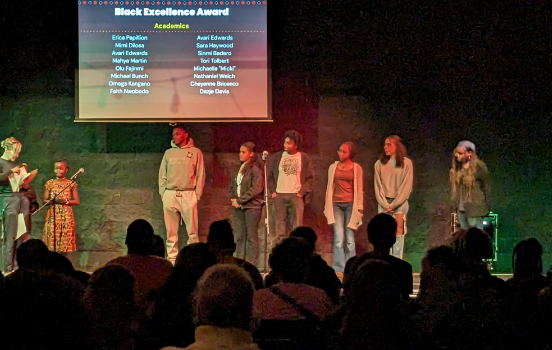Gripes & Pipes
January 10, 2017
The year 2016 was historic. A year of plot twists and cliffhangers, a year of defeats and victories. For the Standing Rock Sioux Tribe, 2016 was a year full of violence, anguish, and hardships which have carried on into 2017.
The Standing Rock Sioux tribe in North Dakota spent months protesting the $4 billion Dakota Access Pipeline (DAPL) which they argued could potentially threaten their health, their rights, and their values. The pipeline was first proposed in 2014 by the Texas-based Energy Transfer Partners (ETP), but construction did not begin until 2016. If given the green light, the pipeline would transport crude oil over 1,172 miles across the U.S and would travel under the Missouri River, Lake Oahe, and the tribe’s sacred burial ground. However, according to the ETP, the pipeline does not cross the tribe’s territory. They also claim that other pipelines already established in those areas serve as a larger threat than DAPL. The predicament arose not from the proposal itself, but from the Energy Transfer Partners’ alleged failure to engage the tribe in planning the construction and to create an environmental study. Thousands camped across the construction site to halt further advancement.
Tribe members contend that the pipeline increases the risk of contamination to their sole water source, the Missouri river. In fact, about 2.5 hours from the protest, the Belle Fourche pipeline leaked and spilled 176,000 gallons of oil into the Ash Coulee Creek. Their motto, “Water is Life” has been written on hundreds of flags that now flow in the wind at the campsite.Thousands of U.S. citizens including environmentalists and public figures including Shailene Woodley, actress, and Rev. Jesse Jackson, prominent civil rights activist, have come in support of the Sioux tribe. Environmentalists fear that expanding the oil industry will lead us closer to the harsh consequences of climate change. Hundreds of U.S. veterans have also emerged in support of the protesters.
Access to construct the pipeline was granted by state and local governments who believe that the DAPL is the most environmentally friendly way to transport crude oil to American consumers. The company does not own the oil being transported, they are simply “the FedEx of oil” and will deliver it to refineries.The only realistic alternative to the DAPL is to transport the oil by truck or train which has proven to be more destructive than pipelines. Government officials have been firm on their support for the pipeline and have sent law enforcement to administer the protests. Violence has since broken out among the pipeline supporters and protesters. Law enforcement officials have used rubber bullets, tasers, water cannons, tear gas, grenades, and more in an attempt to quell protesters’ behavior. Unarmed protesters have been left injured and arrested in their efforts. Camping out in below freezing temperatures, police officials have ordered the use of water cannons as one protester cried “stop trying to give us hypothermia.”
Legally, the land that the protesters are camping out on is federal land, so they are violating federal law. The Sioux tribe refuses to accept the eviction notice that Colonel John Henderson, district commander of the U.S. Army Corps of Engineers, issued them because the land was granted theirs in the treaty of 1851. During the gold rush, however, those pieces of land were overtaken by government in an exchange for money. The tribe refused the exchange, but they never received the land back.
The protest has developed become multi-layered and complicated. The pipeline was originally meant to be established in Bismarck, the capital of North Dakota about 105 miles north of the Native American reservation. The citizens of Bismarck had the same concerns and arguments that protesters expressed, so the Energy Transfer Partners budged by moving their construction location. Bismarck is an overwhelmingly white population and protesters now argue that this has become a fight against racial discrimination rather than strictly a territorial issue. Officials claim, however, that there are more residents of Bismarck than there are in the Sioux reservation; therefore, if any harm were to be done, fewer people would be affected in the Sioux reservation. Protesters have backlashed that the only reason there are less tribe members than there are citizens in Bismarck is centuries of Native American discrimination and removal.
Barack Obama sat on the issue for weeks, but eventually denied permission of further construction. The Army Corps of Engineers also denied the permit and stated that they will look at possible alternative routes. The protesters took the night off from fighting to celebrate their victory. The protest has become the longest running in modern history and it’s not over yet. Donald Trump, newly elected president of the United States, recently owned an Energy Transfer Partners stock and supports further construction of the pipeline. The future of the Standing Rock Sioux tribe remains a mystery, but one thing is certain: they will fight for what they believe in.


















